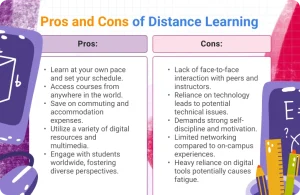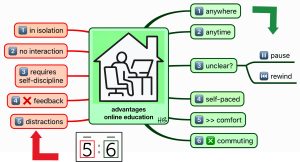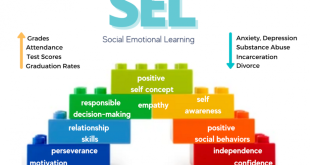In recent years, online learning has gained immense popularity, offering an alternative to traditional classroom education. The rise of digital technologies and the internet has transformed how we access knowledge and skills, making education more flexible and accessible. However, like any educational method, online learning comes with its advantages and disadvantages. This article explores the pros and cons of online learning to help you determine if it’s the right fit for your educational needs.
 The Pros of Online Learning
The Pros of Online Learning
1. Flexibility and Convenience
One of the most significant benefits of online learning is its flexibility. Students can choose when and where to study, making it easier to balance education with work, family, and other commitments.
- Self-Paced Learning: Many online courses allow students to progress at their own pace, enabling them to spend more time on challenging subjects while moving quickly through familiar material.
- Location Independence: Online education eliminates geographical barriers, allowing students to learn from anywhere in the world.
2. Wide Range of Course Options
Online learning provides access to a diverse array of courses and programs that may not be available locally.
- Variety of Subjects: From traditional academic subjects to niche topics, online platforms offer courses on almost any subject you can think of, catering to a wide range of interests and professional needs.
- Global Expertise: Students can learn from instructors and institutions worldwide, gaining insights from experts in various fields.
3. Cost-Effectiveness
Online learning can be more affordable than traditional education, making it an attractive option for many students.
- Reduced Costs: Students can save on commuting, housing, and other expenses associated with attending a physical campus. Many online courses are also more affordable than their in-person counterparts.
- Access to Free Resources: Numerous platforms offer free courses, enabling learners to gain knowledge without financial investment.
4. Development of Self-Discipline and Time Management Skills
Online learning requires students to take greater responsibility for their education, which can lead to improved self-discipline and time management.
- Structured Learning: With flexible schedules, students must develop effective study habits and prioritize their time to succeed.
- Goal Setting: Online learners often set their own goals and deadlines, fostering a sense of accountability and ownership over their education.
5. Enhanced Technical Skills
In today’s digital world, being tech-savvy is essential. Online learning naturally enhances students’ technical skills.
- Familiarity with Digital Tools: Engaging with various online platforms and tools helps students become proficient in using technology, which is increasingly valuable in the job market.
- Adaptability: Online learners often need to adapt to new technologies and learning environments, promoting a growth mindset.
The Cons of Online Learning
1. Limited Social Interaction
One of the most notable drawbacks of online learning is the reduced social interaction compared to traditional classroom settings.
- Isolation: Students may feel isolated due to the lack of face-to-face interaction with peers and instructors, which can affect motivation and engagement.
- Networking Opportunities: Traditional education often provides networking opportunities that are harder to replicate online, potentially limiting professional connections.
2. Self-Motivation Required
While online learning fosters self-discipline, it also requires a high level of self-motivation, which can be challenging for some students.
- Procrastination Risks: Without the structure of a classroom, students may struggle with procrastination, leading to missed deadlines and incomplete coursework.
- Lack of Immediate Support: Online learners may find it harder to seek immediate help from instructors or peers, which can hinder their understanding of complex topics.
3. Variable Quality of Courses
The rapid expansion of online learning platforms has led to a wide variability in course quality.
- Accreditation Concerns: Not all online courses are accredited or recognized by employers, making it essential for students to research programs carefully.
- Inconsistent Instruction: The quality of instruction can vary significantly from one course to another, potentially leading to a less effective learning experience.
4. Technical Issues
Online learning is heavily reliant on technology, which can sometimes lead to challenges.
- Connectivity Problems: Students may encounter issues with internet connectivity, which can disrupt their learning experience and make it difficult to participate in live sessions or complete assignments.
- Learning Curve: Not all students are comfortable with technology, and the learning curve for navigating online platforms can be steep for some.
5. Less Structured Environment
While flexibility is a significant advantage, the lack of a structured environment can be a disadvantage for some learners.
- Difficulty in Maintaining Routine: Students who thrive in structured settings may struggle to create a consistent routine in an online learning environment.
- Distractions at Home: Learning from home can present various distractions that may hinder focus and productivity.
 Conclusion
Conclusion
Online learning offers a unique set of benefits and challenges. Its flexibility, diverse course offerings, and cost-effectiveness make it an attractive option for many students. However, the potential for isolation, the need for self-motivation, and variable course quality are important factors to consider.
Ultimately, the decision to pursue online learning should be based on individual learning styles, goals, and circumstances. By weighing the pros and cons, students can make informed choices that align with their educational needs and career aspirations. Whether you choose online learning or a traditional classroom setting, the key is to stay committed to your learning journey and embrace the opportunities that education provides.


